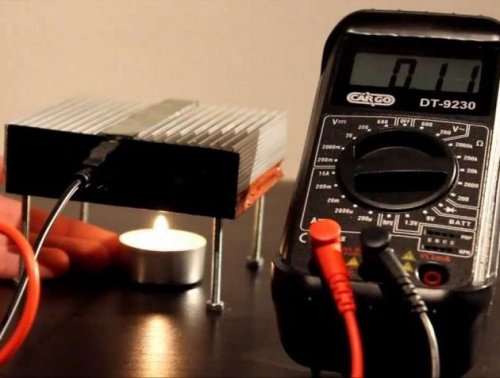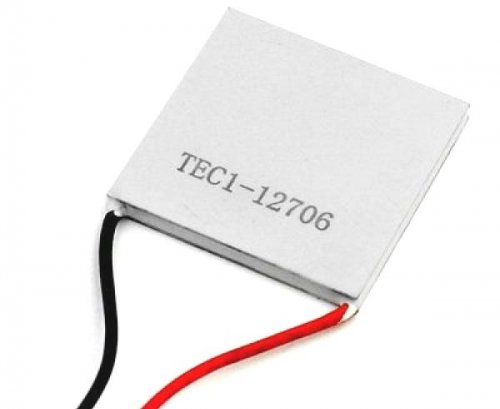Seebeck, Peltier and Thomson thermoelectric effects
The operation of thermoelectric refrigerators and generators is based on thermoelectric phenomena. These include the Seebeck, Peltier and Thomson effects. These effects are related to both the conversion of thermal energy into electrical energy and the conversion of electrical energy into cold energy.
The thermoelectric properties of wires are due to the connections between heat and electric currents:
- Seebeck effect — emergence thermo-EMF in a chain of uneven wires, at different temperatures of its sections;
- Peltier effect — absorption or release of heat at the contact of two different conductors when a direct electric current passes through them;
- Thomson effect — absorption or release of heat (super-Joule) in the volume of a conductor when passing through a pole, electric current in the presence of a temperature gradient.
Seebeck, Peltier, and Thompson effects are among the kinetic phenomena. They are related to the processes of movement of charge and energy, therefore they are often called transfer phenomena.Directional flows of charge and energy in a crystal are generated and maintained by external forces: electric field, temperature gradient.
Directional flow of particles (in particular charge carriers — electrons and holes) also occurs in the presence of a concentration gradient of these particles. The magnetic field itself does not create directed flows of charge or energy, but it affects the flows created by other external influences.
Seebekov effect
The Seebeck effect is that if in an open electrical circuit consisting of several different conductors one of the contacts maintains the temperature T1 (hot junction) and the other the temperature T2 (cold junction), then under the condition that T1 is not equal to T2 at the ends a thermoelectromotive force E appears on the circuit. When the contacts are closed, an electric current appears in the circuit.
Seebekov effect:
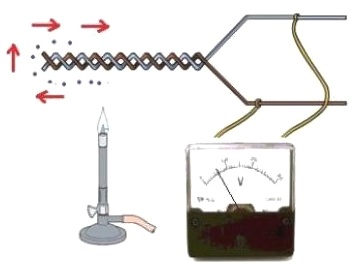
In the presence of a temperature gradient in the conductor, the thermal diffusion flow of charge carriers occurs from the hot end to the cold end. If the electrical circuit is open, then carriers accumulate at the cold end, charging it negatively if these are electrons, and positively in the case of hole conduction. In this case, uncompensated ion charge remains at the hot end.
The resulting electric field slows the movement of carriers toward the cold end and accelerates the movement of carriers toward the hot end. The non-equilibrium distribution function formed by the temperature gradient shifts under the action of the electric field and is deformed to some extent. The resulting distribution is such that the current is zero. The strength of the electric field is proportional to the temperature gradient that caused it.
The value of the proportionality factor and its sign depend on the properties of the material. It is possible to detect the electric Seebeck field and measure the thermoelectromotive force only in a circuit composed of different materials. Differences in potential contacts correspond to the difference in chemical potentials of the materials that come into contact.
Peltier effect
The Peltier effect is that when a direct current passes through a thermocouple consisting of two conductors or semiconductors, a certain amount of heat is released or absorbed at the contact point (depending on the direction of the current).
When electrons move from a p-type material to an n-type material through an electrical contact, they must overcome an energy barrier and take energy from the crystal lattice (cold junction) to do so. Conversely, when going from an n-type material to a p-type material, electrons donate energy to the lattice (hot junction).
Peltier Effect:
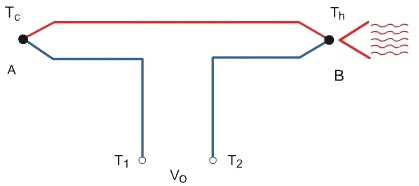
Thomson effect
The Thomson effect is that when an electric current flows through a conductor or semiconductor in which a temperature gradient is created, in addition to the Joule heat, a certain amount of heat is released or absorbed (depending on the direction of the current).
The physical reason for this effect is related to the fact that the energy of free electrons depends on temperature. Then the electrons acquire a higher energy in the hot compound than in the cold one. The density of free electrons also increases with increasing temperature, resulting in a flow of electrons from the hot end to the cold end.
The positive charge accumulates at the hot end and the negative charge at the cold end. The redistribution of charges prevents the flow of electrons and, at a certain potential difference, stops it completely.
The phenomena described above occur in a similar way in substances with hole conduction, with the only difference being that negative charge accumulates at the hot end and positively charged holes at the cold end. Therefore, for substances with mixed conductivity, the Thomson effect turns out to be negligible.
Thomson effect:
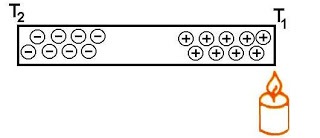
The Thomson effect has not found practical application, but it can be used to determine the type of impurity conductivity of semiconductors.
Practical use of Seebeck and Peltier effects
Thermoelectric phenomena: Seebeck and Peltier effects — find practical application in machineless heat to electrical energy converters — thermoelectric generators (TEG), in heat pumps — cooling devices, thermostats, air conditioners, in measuring and control systems such as temperature sensors, heat flow (see — Thermoelectric converters).
At the heart of thermoelectric devices are special semiconductor elements-transducers (thermoelements, thermoelectric modules), for example, such as TEC1-12706. Read more here: Peltier element - how it works and how to check and connect

